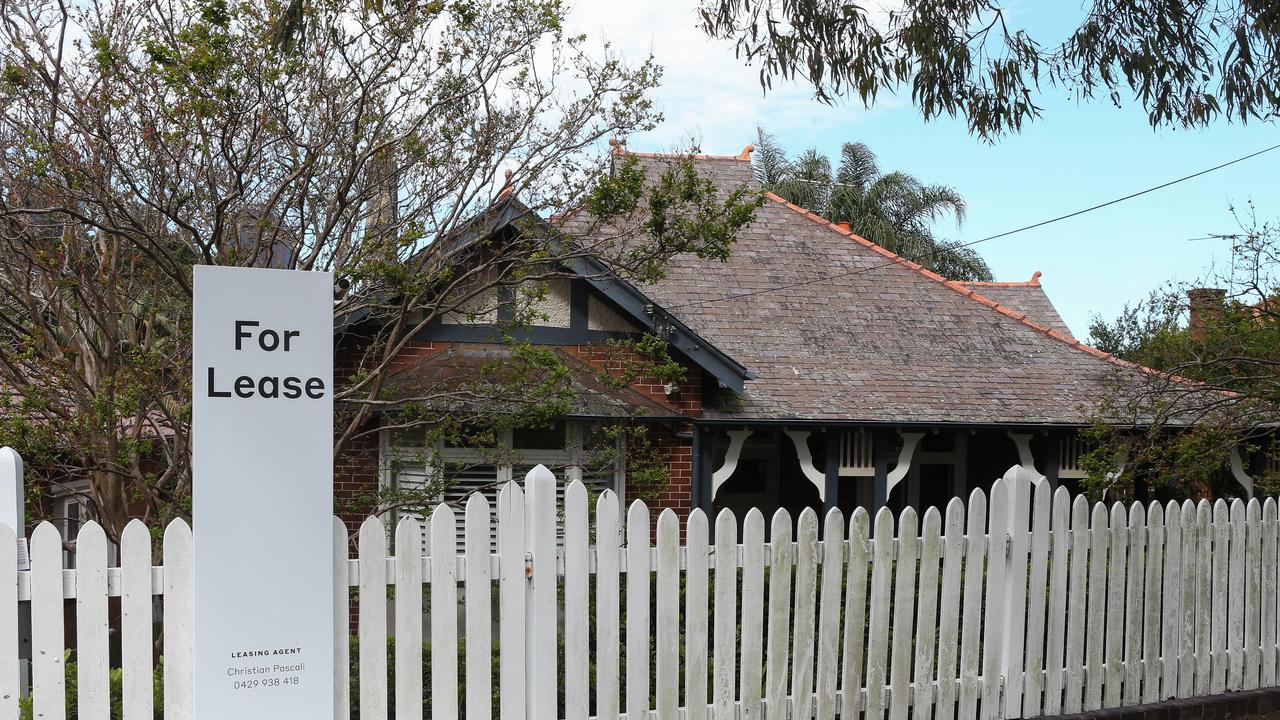Scary prediction for rental market as it’s placed under significant stress
At first glance Covid was expected to relieve a key pressure in the property market. Instead, the opposite has now happened.
Since the pandemic first arrived on Australian shores way back at the start of 2020, the outcomes faced by people in different states and regions of the country have been disparate. From border closures to localised lockdowns, one’s postcode or region has at times defined our existences.
But even as the direct impact of the pandemic begins to fade from our lives, its legacy and the changes in the way we live our lives that it prompted, continue to influence outcomes across the nation.
One place where outcomes are highly varied is in the nation’s various rental markets. In some markets rents are falling, while in others they are still rising extremely rapidly. But even within individual cities or regions, the outcomes can be highly divergent when comparing the growth in rents for units and houses.
Wondering what can cause falling house prices? Check out Compare Money's guide >

An unexpected rental crisis …
For almost two years Australia’s borders were largely closed to international arrivals, leading the largest reverse of overseas net migration since the first world war.
At first glance one would assume that this would have led to a plentiful supply of housing for both new homeowners and renters alike, after all homes were still being built in record numbers during this time, all be it at a slower pace due to the pandemic and supply issues.
But in the end, the complete opposite ended up occurring. In the words of managing director of property data provider SQM Research, Louis Christopher: “The Australian rental crisis deteriorates to unprecedented levels for our current generation.”
There are a long list of reasons and theories as to why this has occurred, we explored some of the driving factors in a recent article, including, the decline in sharehousing and changes to domestic migration patterns.
These factors have also been exacerbated by the delayed completion of new homes.
In the last quarter unimpacted by the pandemic, there were a little over 188,000 new dwellings under construction nationwide. As of the end of the March quarter of this year (the latest data currently available), there are 240,000 new dwellings currently under construction.
Of the 52,000 more homes currently under construction compared with pre-Covid, a sizeable proportion of these households would be seeking alternative accommodations as they await the completion of their homes.
This is placing significant additional stress on a rental market already struggling under the weight of pandemic driven changes and rapidly rising levels of immigration.
A divergent path forward
According to housing data provider PropTrack, dwelling rents nationally rose 4.3 per cent in the September quarter and 10.3 per cent over the past 12 months.
But it’s here where the path of different rental markets, houses and units all begin to diverge. For example, in terms of houses in regional rental markets in aggregate, rents during the September quarter were either flat or falling in all states and territories, with the one exception of Western Australia.
At the other end of spectrum, unit rents in Melbourne and Sydney surged in the September quarter, up by 5 per cent and 4 per cent respectively. With the nation’s two largest cities the main destinations for new migrants and international students, rents in Sydney and Melbourne may continue to surge.
According to figures from the Australian Bureau of Statistics (ABS), in the March quarter, the nation recorded its highest ever quarterly net overseas migration figure.
With plans from the Albanese government to ramp up the non-humanitarian permanent migrant intake to 195,000 per year, its highest level ever, this may continue to put pressure on rents on areas popular with new arrivals.
As you can see the issue of rising rents is a highly disparate issue, with price pressures coming off the boil in some markets and others still rising strongly. This leaves rental market participants in very different positions depending on their locale and whether or not they are seeking a house or a unit.
In some instances, such as elements of the Sydney and Melbourne unit markets, landlords will arguably continue to hold all the cards when it comes to further increases in rents.
In other rental markets such as some house markets in regional areas in aggregate, much of the leverage held by landlords has evaporated, as shown by flat or falling rents in regional rental markets during the September quarter.
While some Australians can and will pay more rent if they have to, in some markets tenants have seemingly already neared or reached their limits. As the old saying goes, “You can’t get blood from a stone” or in this instance, a higher rent from tenants in area without the ability to pay.
Tarric Brooker is a freelance journalist and social commentator | @AvidCommentator






